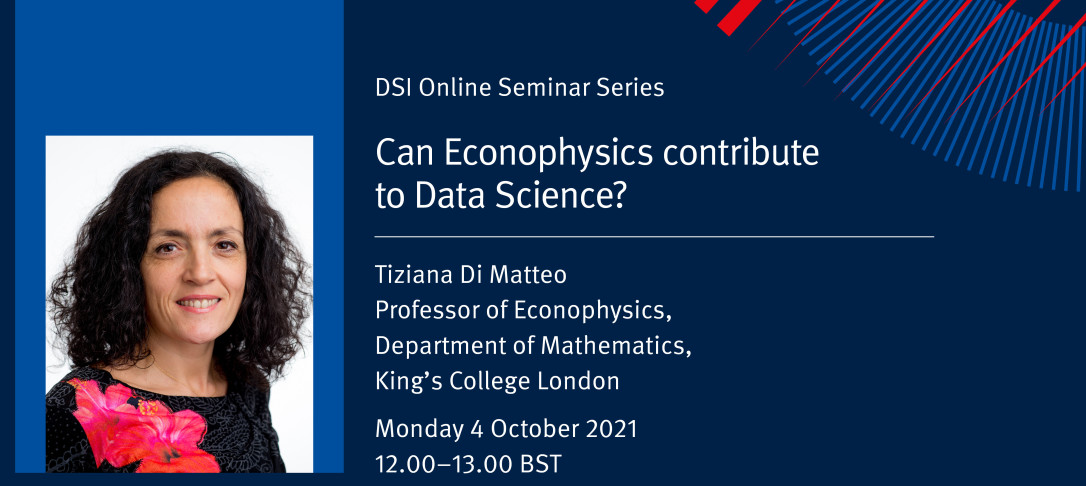
Speaker Biography
Tiziana Di Matteo is Professor of Econophysics. A trained physicist, she took her degree and PhD from the University of Salerno in Italy before assuming research roles at universities in Australia and Britain. She works in the Department of Mathematics at KCL in Econophysics, complex systems, complex networks and Data science. She has authored over 100 papers and gave invited and keynote talks at major international conferences in the US, across Europe and Asia, making her one of the world’s leaders in this field. She is member of the External Faculty of the Complexity Science Hub in Vienna, Member of the UCL Centre for Blockchain Technologies, Member of the Board of the Complex System Laboratory, Member of the Council and of the executive committee of the Complex Systems Society. She is Member of the Board of Directors of the Museo Storico della Fisica e Centro Studi e Ricerche “E. Fermi”. She is Editor-in-Chief for the Journal Advances in Mathematical Physics, Main Editor of Physica A, Editor of the European Physical Journal B, Editor of the Artificial Intelligence in Finance journal and Guest Editor of several other volumes. She has been Editor-in-Chief for the Journal of Network Theory in Finance. She is Co-founder of the Econophysics Network. She has been consultant for the Financial Services Authority, several hedge funds and companies.
Talk Abstract
In this talk I will briefly give you a broad overview of the state of the art in Econophysics: a discipline that has already a rich history and even controversial trends and I will discuss how tools used within Econophysics might be useful for data scientists at large. Data are everywhere and they carry information. Using, understanding and filtering such information has become a major activity across science, industry and society at large. It is therefore important to have tools that can analyse this information while it is generated and that can provide ways to reduce complexity and dimensionality while keeping the integrity of the dataset. Information content and flow are often associated with large degrees of redundancy both in time (repeating and scaling patterns) and across different variables (similarity, dependency and causality). Redundancy is often used to convey strength to the meaning or, more simply, it is the signal of recurring patterns with high statistical significance and therefore important.
In this talk I will show how such redundancy can be used to build an information-based network that retains the relevant part of the data-interdependency structure. The structure of this network is a representation of the information in the dataset and such information can be efficiently analysed by using network-theoretic tools. In particular I will introduce correlation-based information filtering networks tools and I will show that applications to financial data-sets can meaningfully identify industrial activities and structural market changes.
Finally, I will also show that filtered graphs are valuable tools for risk management and portfolio optimization too and they allow to construct probabilistic sparse modelling for financial systems that can be used for forecasting, stress testing and risk allocation.
Future DSI online seminar series
Stay up to date with future DSI seminar series by joining our mailing list, email DSI events manager Ping Huang.


